Vital Pulp Therapy
Vital pulp therapy is the treatment of the pulpal complex of a tooth affected by either caries or trauma. The goal is to treat or protect the pulpal complex, maintain vitality and comfort. In the primary dentition, vital pulp therapy includes indirect or direct pulp therapy or cap, and pulpotomy. All these procedures treat the pulpal complex while maintaining the vitality of the tooth. Given the simple truth that primary dentition is temporary or transitional, it is important to review why to treat the tooth at all. First, the preservation of primary teeth is necessary for function, so that a child may chew and smile. Second, treatment of a caries- or trauma-affected primary tooth pulpally prevents or eliminates pain, inflammation, infection and prevents damage to succedaneous teeth and oral tissues. Third, primary teeth are space maintainers for permanent successor eruption, maintain arch length and help to guide permanent dentition into place.
Treatment
Pulpotomy treatment is a very common form of vital pulp therapy. The procedure involves amputation of the coronal portion of the pulp and treatment of the remaining radicular pulp stumps. The rationale is that due to bacterial assault, pulps with a carious exposure have a limited potential for recovery and healthy radicular pulp tissue is capable of maintaining vitality after removal of the infected coronal pulp. The success of the pulpotomy is dependent in large part upon proper diagnosis to accurately determine that the tooth in question is in fact a candidate for vital pulp therapy. Signs and symptoms include normal soft tissue, no radiographic radiolucency and if tooth pain is experienced that it is limited to induced, intermittent or transient pain only. With proper diagnosis, we must combine excellent materials and excellent technique.
Pulpotomy Materials
Materials for pulpotomy procedures have improved greatly in recent years. Focus has turned to calcium silicates. Traditionally calcium silicates are powders and liquids that require mixing and long setting times. They are often expensive and difficult to handle. To answer the call for effective and easy to use pulpotomy material, BISCO has introduced TheraCal PT, a dual-cure resin-modified calcium silicate material specifically for pulpotomy treatment. TheraCal PT is unlike any other pulpotomy material. It is available as a dual-cure material in a simple-to-dispense syringe and set begins with a command light cure and continues with a self cure. Due to the resin-modified calcium silicate chemistry, TheraCal PT offers calcium release and alkaline pH. Immediately after placement and curing, the tooth is ready to be restored.
The chemical formulation of TheraCal PT consists of synthetic Portland Cement calcium silicate particles in a hydrophilic matrix which facilitates calcium release*.
Case Presentation Using TheraCal PT

Figure 1: Pre-operative view. Primary second molar requiring pulpotomy procedure.
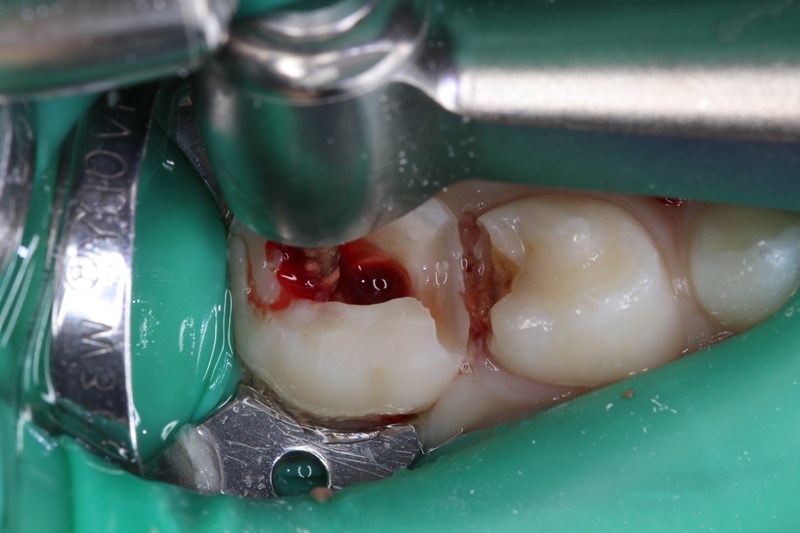
Figure 2: Amputation of coronal pulp chamber to the level of radicular pulp stumps was performed with NSK Dental slow speed large round bur #8, removing coronal pulp tissue with gentle upward motion.
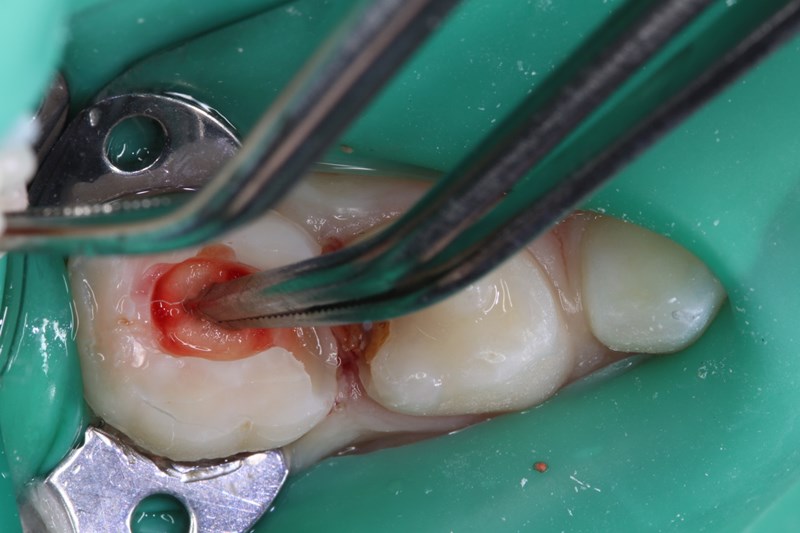
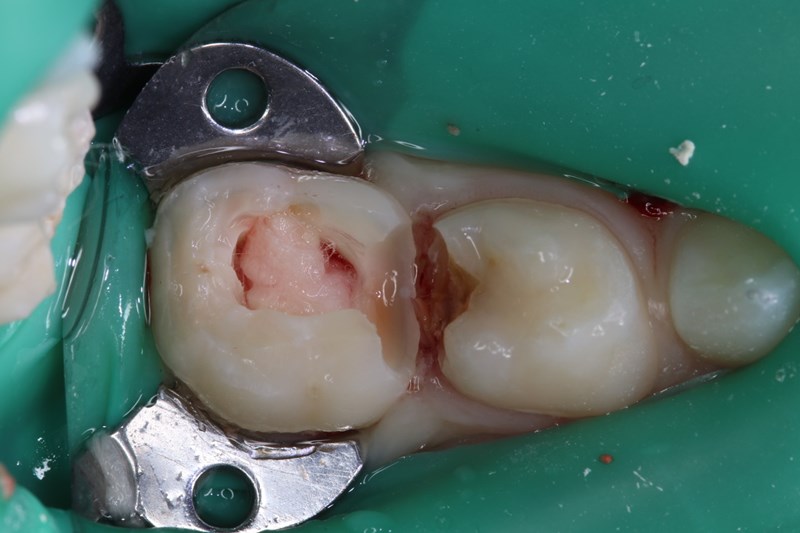
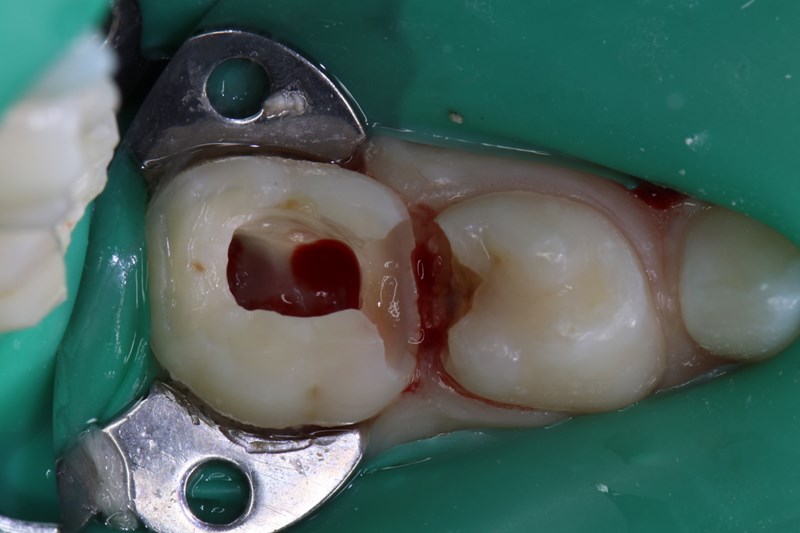
Figures 3-5: Hemostasis is achieved with a saline-soaked sterile cotton pellet.
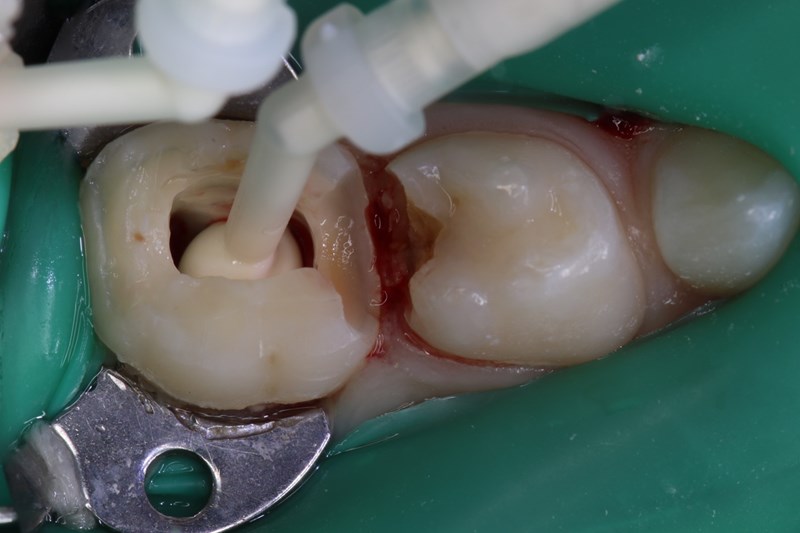
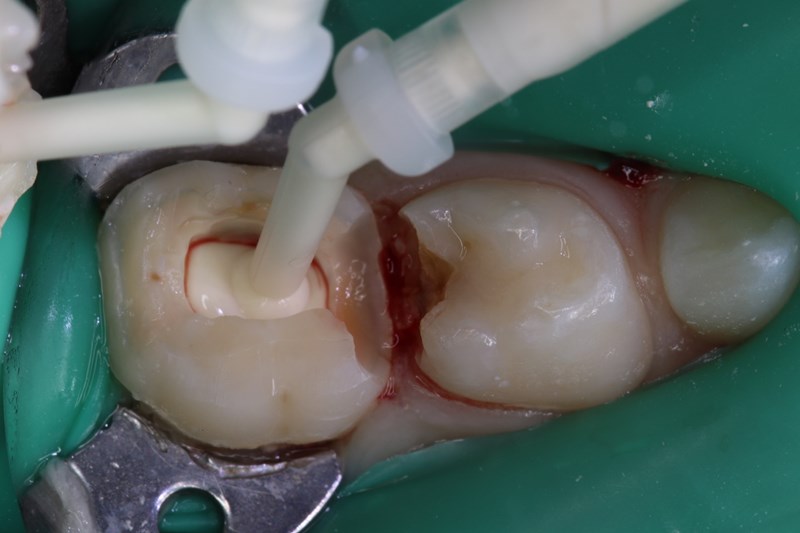
Figures 6-7:Extrusion of TheraCal PT into the pulp chamber, being sure to reach the base of the coronal pulp chamber with material and without voids or bubbles then light cure.
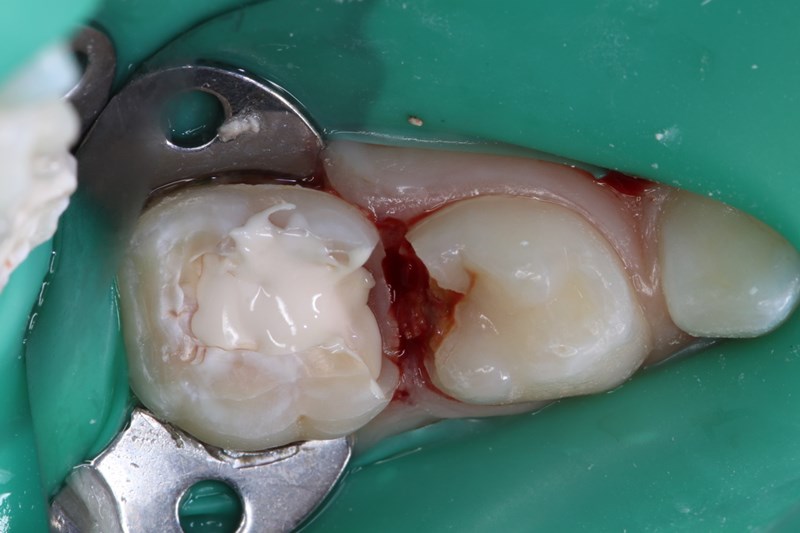
Figure 8: Cured TheraCal PT.
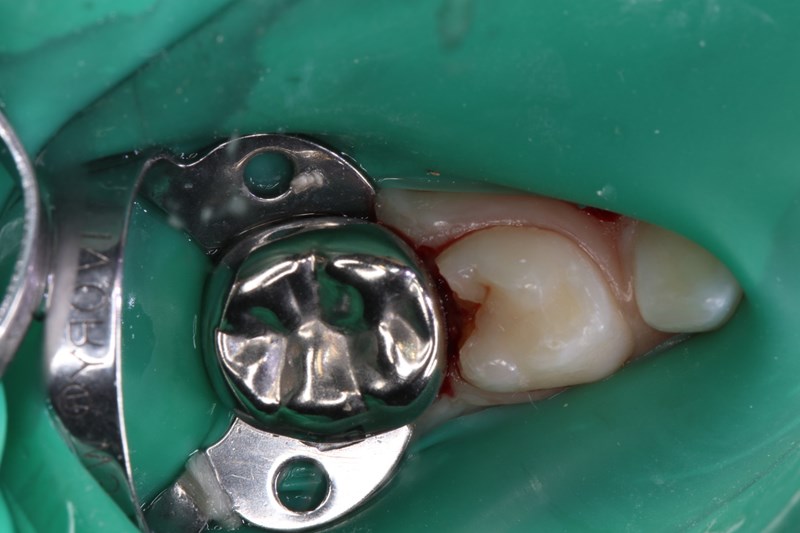
Figure 9: The patient’s full-coverage stainless-steel crown.
Courtesy of Dr. Carla Cohn
*Data on file
August 2020